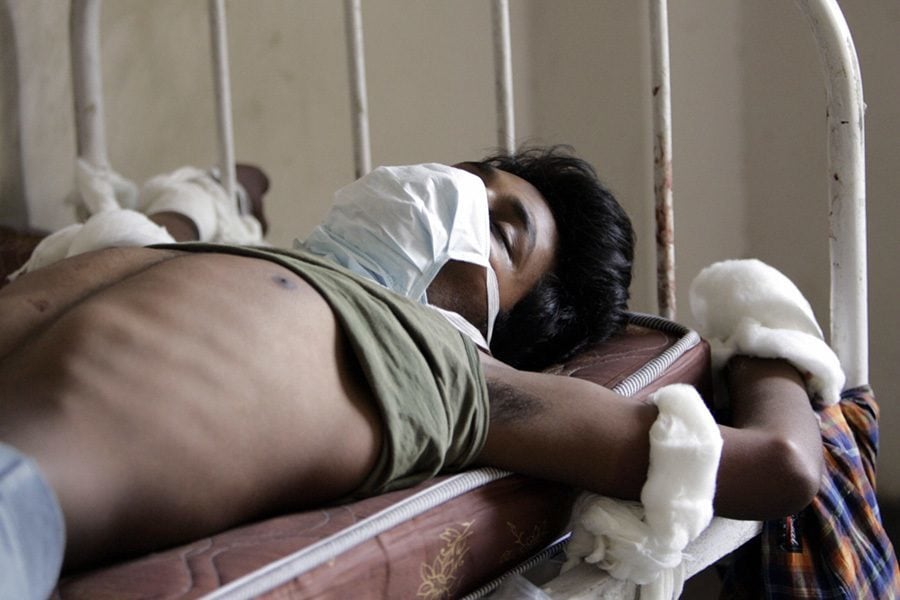3. Meningitis (Streptococcus suis)

An Indian patient of bacterial meningitis lies on a hospital bed in 2005. PRAKASH SINGH/AFP/Getty Images
Although meningitis may not initially seem as scary as anthrax or bubonic plague, it’s actually far more deadly than either today. In 2013, meningitis took the lives of about 300,000 people worldwide.
And researchers found the bacteria for this prolific killer in 66 NYC subway stations.
Meningitis causes membranes covering the brain and spinal cord to swell, which then causes painful stiffness in the neck, fever, and headache — symptoms scarily similar to a cold.
And somewhat like a cold, you might be able to catch meningitis if an infected person coughs on or kisses you, but you can’t get it just by breathing the same air as an infected person. That means that if you step onto a NYC subway car that a person with meningitis recently rode, you aren’t at risk. In fact, meningitis is usually spread through feces, so use your common sense and don’t touch any poop during your commute.
4. Antibiotic Resistant Bacteria (Acinetobacter baumannii)

Penicillin.se
More so than any other microbes, the Weill Cornell researchers encountered antibiotic resistant bacteria; they were present in 220 NYC subway stations.
These strains are smart. Some of them, like gonorrhea and staph, have developed the ability to resist the antibiotics once used to treat them.
And while the presence of these plucky microbes might seem threatening in a place where our skin is constantly exposed, there’s less reason to be alarmed than you might think: “These potentially infectious agents are not creating widespread sickness or disease,” the study says. “Instead, they likely represent normal co-habitants of a shared urban infrastructure.”
So how can we prevent bacteria from becoming resistant to antibiotics? Stop taking antibiotics for viral infections, like the common cold, and for goodness sake, wash your hands.
5. Food Poisoning (Bacillus cereus/thuringiensis)

deeepblue/Getty Images
Bacillus cereus, the bacteria that causes foodborne illness, was present at 215 subway stations. And according to the CDC, every year one in six people come down with a foodborne illnesses.
Most people who contract food poisoning recover within 6 to 24 hours, but last year WHO released a staggering report which indicated that 351,000 people die from food poisoning worldwide each year.
However, food poisoning can only be contracted by eating toxic shellfish, fruit or vegetables contaminated by feces, or undercooked meat, so you aren’t at risk for getting it while riding the NYC subway — unless of course, you’re in the habit of licking the poles or eating discarded food off the subway floors. Please, try not to do either.
Learn more about the amazing medical advances fighting diseases. Then, check out photos from the NYC subways in the 1980s.





